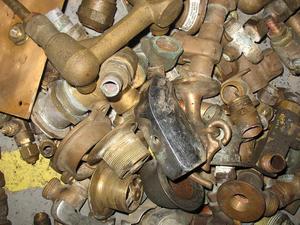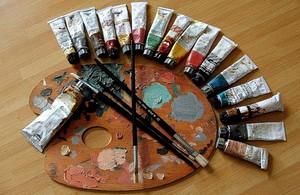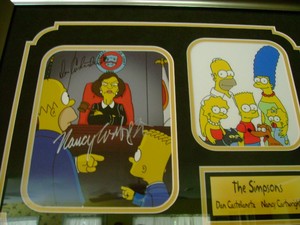Most people do not know how to grade the scrap metal that they’ve acquired. They simply leave it in the hands of the scrap metal purchasing facility. This is a terrible, terrible mistake. The goal of the purchasing facility is to make as much money as possible on the material they buy. Most buyers recognize when a seller doesn’t know exactly what they have, and it is a common practice to exploit this, by buying the material at a lower grade product than it actually is. This article will help you to better understand the grading methods, and not to be taken advantage of when selling your material.
CONSISTENCY IS KEY
Look for inconsistencies in grading. Try to adhere to the phrase “It is what it is”. Very simple, but very meaningful. Each time you visit the scrap facility, your material should be graded relatively the same. If, for instance, you were to take clean copper tubing on two different occasions, it should be graded as a # 1 copper each time. If you’re lucky enough to have two facilities within a reasonable distance of each other, a good trick is to take the same type of material to each facility and compare the grading structures. If they grade the material differently, chances are the higher of the two grades is the correct grade. You can really learn a lot just by simple observation and comparison. A perfect example is that some facilities will try to purchase all of your copper as a # 2 copper, citing that is has contamination on it, when in reality part of it is probably a # 1 grade copper. After they purchase the copper from you, they will separate it, and gain the extra profit for themselves. One of the worst mistakes to make is to “throw” all of your material together, and let the facility separate it. They will give you the lowest possible price because of the extra labor involved. If you mix copper and brass together in a container, you will more than likely be paid for brass, which is the lesser grade material of the two, and therefore cheaper. This, of course, means that the facility will profit highly on the copper portion of the material which was purchased as though it were brass. Profit you should have received for your labor.
WORTH YOUR WEIGHT
Another pitfall to avoid, if you sell material on a regular basis, is selling certain types of material on a per-piece pricing structure. An example of this type of material is car batteries. Some facilities buy them as an individual unit, paying a set price regardless of weight. You should always sell your material by weight. The purchasing facility will never pay in your favor when buying by the piece. There will be some instances, when selling by weight, that will net you less money, as in the case of a lighter than average battery. But, on the average, a battery will bring the same, if not more, by poundage than it will with the per-piece price set by the facility. It is by design, that they make more money with this pricing schedule. One of the few items that must be sold by piece pricing is catalytic converters. This is due mainly to the difficulties in processing and identifying the quality of the material once removed from the steel canister. Catalytic Converters are still subject to the same rule of consistency though. If you sell a catalytic converter as a “large foreign” one week, it should not be a “small foreign” the next.
DIRTY DOESN’T MEAN WORTHLESS
Most material will be subject to a status of “clean” or “dirty”. Clean simply means that the material has no contamination on it, such as steel, plastic, wood, etc. Dirty just means the opposite. A brass faucet may be contaminated by a steel screw which attaches the knob to the faucet base, and therefore be considered dirty brass. Keep in mind, that oxidation is not necessarily contamination. In fact, it rarely is. A piece of copper tubing covered in green oxidation is still a # 1 grade copper. It is not degraded to a # 2 copper because of the oxidation. Most facilities will try to use this tactic to raise the amount of profit on a given item. Some facilities will also try to operate under a “black and white” purchasing model. This means that they buy material as either clean or dirty with no in-between. But, don’t be fooled. There are varying degrees of dirty. Some items will have very little contamination, and should carry a better price than an item with a great deal of contamination. More often than not, there is a middle grade, particularly with cast aluminum products. Also, in a lot of cases, one small screw is not going to make an item dirty. The facility will purchase that item as dirty and toss it into the same container with all of the clean material. So, politely stand your ground on what you expect to receive for your collection of items, without being unreasonable. Common sense goes a long way in this respect. Remember, if a particular facility doesn’t want to work with you, there will be another that does.
THE CORE OF THE ISSUE
So far I’ve discussed how to handle basic scrap. These are things which are of no use outside of melting them down, and turning them into new raw materials through a smelting process. But, there is one more thing to consider. Some items can be rebuilt, and reused. Common examples are car alternators, starters, and transmissions. These items are generally called cores. Cores have more value to a re-builder than they do to a scrap processor, and in some cases, carry a premium price. Core products will usually bring a higher amount on a per-piece pricing structure. They are an exception to the ‘sell-by-weight rule’. Not all purchasing facilities will recognize core items. Some facilities simply pass up core sales completely, and just load all of their material into container trucks, which will end up in China or India. If, your nearest scrap purchasing facility does not recognize core items, try a local transmission shop, or garage. They may have use of a transmission which you have acquired, and be willing to pay a good price for it. The same thing generally applies to engines, and engine parts. Most areas have scrap dealers which travel on a route system, picking up items from businesses like garages and car dealerships. These drive-through scrap dealers could be a good source for selling your core parts, which is what they normally deal in. Just be wary that some of these dealers are “shady” to say the least. Steer clear of “it sounds too good to be true” situations. One very common ploy comes in the form of a traveling scrap dealer which comes to your location and sees that you have twenty aluminum car rims and forty catalytic converters. He makes a really high offer to you for the aluminum rims, and what appears to be a reasonable offer on the catalytic converters. The price on the rims just seems too good to be true, but you just don’t really see how you can lose. The trick here is that the scrap dealer is making his money on the catalytic converters. The dealer has already “summed you up” in your initial conversations about pricing. He recognizes that you have nothing more than a general knowledge of catalytic converter grades. This means he is probably getting a great number of your converters on a reduced grading scale, and even with a potential loss on the aluminum car rims, he stands to profit significantly on the catalytic converters. Don’t be fooled into thinking that you somehow took advantage of the poor old scrap dealer. His number one priority is to make money, and he figured out how to do that before he ever met you.
AWARENESS IS YOUR DEFENSE
There are a number of legitimate scrap dealers in operation. But, for the large part, the industry, at the grass roots level of purchasing, is based on “smoke and mirrors”. The industry thrives on confusion and a lack of knowledge on the part of the seller. Be cautious of facilities that won’t provide a price list on request. What do they have to hide? The price is the price, and you, as the seller, have every right to know what you will receive for your material before you sell it. You also have the right to see the weights on the material as you provide it. A few really corrupt dealers will try to “shave” weight at the scale, or add it to your tare, to make it appear as though you had less material than you actually did. Always make a note of your scale weights, and request a receipt for comparison purposes. Be sure to look over your receipt before you leave. When selling your products, be inquisitive, and pay attention to the grading methods. Ask for grading examples. If something doesn’t seem right, it probably isn’t, and that will be the cue to find a new buyer.



